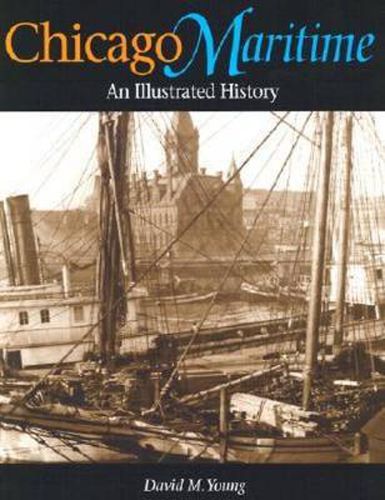Readings Newsletter
Become a Readings Member to make your shopping experience even easier.
Sign in or sign up for free!
You’re not far away from qualifying for FREE standard shipping within Australia
You’ve qualified for FREE standard shipping within Australia
The cart is loading…






This lavishly illustrated history of Chicago as freight handler to the nation chronicles the vital role of waterborne trade and transportation in building a metropolis on the swampland that the Illiniwek once called Checagou. Louis Jolliet, the first European explorer to the area, recognized that a waterway between the Great Lakes and the Mississippi River could link the Atlantic and the Gulf of Mexico, making Checagou the fulcrum of east-west and north-south transportation for the continent. Upon completion of the I&M Canal in 1848, Chicago quickly became one of the busiest ports in the world, attracting thousands of schooners, barks, sloops, and paddle-wheel steamships.
More than 100 illustrations and maps-along with tales of majestic sailing ships, piracy, terrible storms, and tragic shipwrecks-portray the eventful history of Chicago’s waterways. Young describes the reversal of the Chicago River, which helped to clean the city and flood it with new life. Chicago flourished as a port of entry to the West and transportation hub, despite the disastrous Great Fire of 1871 that destroyed much of the city, including the docks and ships moored along the Chicago River. Marine disasters took their toll, too, as when the Eastland capsized in 1915, drowning nearly 900 passengers.
Through narratives by two famous travelers of Chicago’s waterways, Charles Dickens and Abraham Lincoln, Young reveals the hardships and small comforts of lake and river travel in its heyday. He also tells of Chicago’s marine traditions, such as the eagerly anticipated arrival of ships bearing Christmas trees that drew holiday crowds to the docks each year.
Today, giant car ferries and enormous ore carriers larger than battleships ply the lakes alongside luxury yachts, while the rivers that feed Chicago-and allow Chicago to feed the world-are still lively with traffic. Chicago’s geographic advantages, which allowed it to eclipse competitors in the age of sail and steam, assure that it will remain a vital center for American transportation and commerce in the twenty-first century.
$9.00 standard shipping within Australia
FREE standard shipping within Australia for orders over $100.00
Express & International shipping calculated at checkout
This lavishly illustrated history of Chicago as freight handler to the nation chronicles the vital role of waterborne trade and transportation in building a metropolis on the swampland that the Illiniwek once called Checagou. Louis Jolliet, the first European explorer to the area, recognized that a waterway between the Great Lakes and the Mississippi River could link the Atlantic and the Gulf of Mexico, making Checagou the fulcrum of east-west and north-south transportation for the continent. Upon completion of the I&M Canal in 1848, Chicago quickly became one of the busiest ports in the world, attracting thousands of schooners, barks, sloops, and paddle-wheel steamships.
More than 100 illustrations and maps-along with tales of majestic sailing ships, piracy, terrible storms, and tragic shipwrecks-portray the eventful history of Chicago’s waterways. Young describes the reversal of the Chicago River, which helped to clean the city and flood it with new life. Chicago flourished as a port of entry to the West and transportation hub, despite the disastrous Great Fire of 1871 that destroyed much of the city, including the docks and ships moored along the Chicago River. Marine disasters took their toll, too, as when the Eastland capsized in 1915, drowning nearly 900 passengers.
Through narratives by two famous travelers of Chicago’s waterways, Charles Dickens and Abraham Lincoln, Young reveals the hardships and small comforts of lake and river travel in its heyday. He also tells of Chicago’s marine traditions, such as the eagerly anticipated arrival of ships bearing Christmas trees that drew holiday crowds to the docks each year.
Today, giant car ferries and enormous ore carriers larger than battleships ply the lakes alongside luxury yachts, while the rivers that feed Chicago-and allow Chicago to feed the world-are still lively with traffic. Chicago’s geographic advantages, which allowed it to eclipse competitors in the age of sail and steam, assure that it will remain a vital center for American transportation and commerce in the twenty-first century.